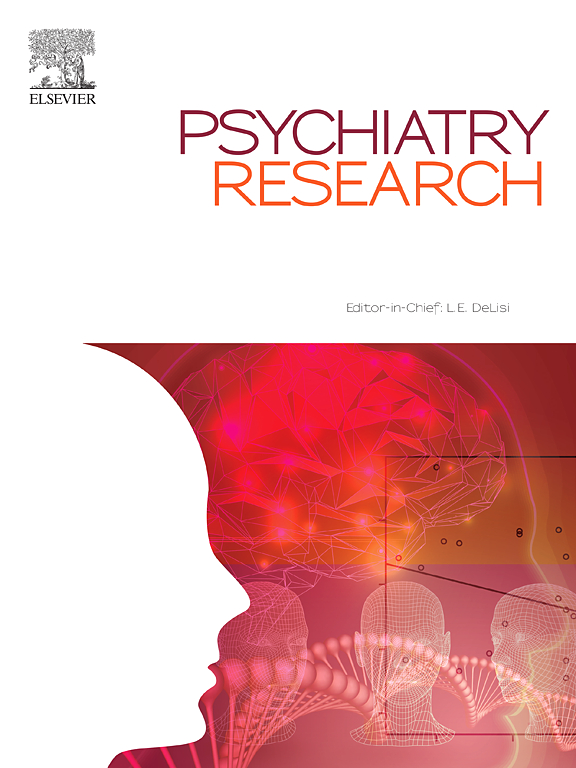Suicidal ideation and avoidant/restrictive food intake disorder: Findings from the ARFID-GEN study
IF 4.2
2区 医学
Q1 PSYCHIATRY
引用次数: 0
Abstract
This study examined the prevalence of suicidal ideation (SI) among adults with avoidant/restrictive food intake disorder (ARFID) across different demographic groups and explored associations between SI and specific ARFID dimensions. The sample included 3299 adults who screened positive for ARFID using two validated scales. SI over the past two weeks was assessed using item 9 from the Patient Health Questionnaire-9. The overall prevalence of SI was 22.9 %, with a higher prevalence among transgender and gender-diverse (TGD) individuals (34.7 %) compared to cisgender men (17.8 %) and cisgender women (16.8 %). Participants with SI (mean = 27.6 years, SD = 10.1) were younger than those without SI (mean = 32.3 years, SD = 13.4). The ARFID dimensions picky eating/sensory-based avoidance and low appetite/lack of interest in eating or food were positively associated with SI; however, these associations became non-significant after adjusting for age, gender, and depression. Interestingly, fear/concern about aversive consequences was significantly negatively associated with SI after adjusting for covariates. Our results suggest that the fear presentation of ARFID may be a distinct subtype with a lower risk of suicidality compared to other presentations, highlighting the importance of comprehensively evaluating ARFID dimensions and underlying depressive symptoms to better address the risk of suicidality.
求助全文
约1分钟内获得全文
求助全文
来源期刊

Psychiatry Research
医学-精神病学
CiteScore
17.40
自引率
1.80%
发文量
527
审稿时长
57 days
期刊介绍:
Psychiatry Research offers swift publication of comprehensive research reports and reviews within the field of psychiatry.
The scope of the journal encompasses:
Biochemical, physiological, neuroanatomic, genetic, neurocognitive, and psychosocial determinants of psychiatric disorders.
Diagnostic assessments of psychiatric disorders.
Evaluations that pursue hypotheses about the cause or causes of psychiatric diseases.
Evaluations of pharmacologic and non-pharmacologic psychiatric treatments.
Basic neuroscience studies related to animal or neurochemical models for psychiatric disorders.
Methodological advances, such as instrumentation, clinical scales, and assays directly applicable to psychiatric research.
 求助内容:
求助内容: 应助结果提醒方式:
应助结果提醒方式:


